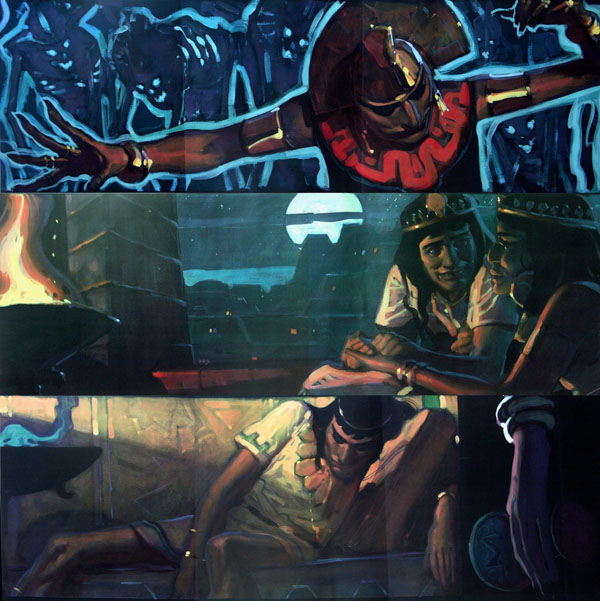
Pre-Production paintings for “Kingdom Of The Sun” by John Watkiss
Suspended Animation #375
In 1997, musical performer and composer Sting was asked by the Walt Disney Company to write the music for a new animated feature called Kingdom of the Sun. It was to be directed by Roger Allers who was basking in the success of his work on The Lion King.
Sting agreed, on the condition that his wife, filmmaker Trudie Styler, could document the process of the production with their own production company, Xingu Films. The final making of the film documentary was co-directed by Styler and John-Paul Davidson.
In Walt Disney’s studio, there was a screening room with no air conditioning, causing the animators to sweat while their rough work was being critiqued. The room became known as the “Sweatbox” and it became the name used for the process of reviewing animation as it developed.
Since the documentary was to recount the process of making an animated film, it seemed appropriate to use the same term.
The 86-minute documentary The Sweatbox, originally set for release in early 2001, was heavily edited down into a short extra feature on The Emperor’s New Groove DVD and named “Making the Music Video” and only featuring the Oscar-nominated song, “My Funny Friend and Me.”
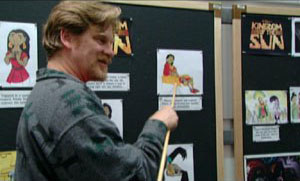
Roger Allers in “The Sweatbox”
It was also shown at The Enzian Theater in Orlando as part of the Florida Film Festival at the late night screening I attended along with Greg Ehrbar and several local animators who had worked for Disney.
Sting’s wife was given unlimited access when it came to Production No. 1331 (aka “Kingdom”). She and her camera sat in on story meetings for the movie, rolled while actors auditioned as well as taping Sting while he recorded the score. No one expected two years into the production, it would shift direction drastically.
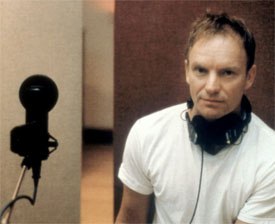
Sting – during the “Kingdom of the Sun” production
Following a tense, brutal sweatbox screening for executives Schumacher and Peter Schneider with about twenty percent or more of the animation completed, the original story, which was a sort of a version of the well-known “Prince and the Pauper” story, is torn apart. Director Allers quits. Sting’s songs are suddenly out of key in a movie that is now going to be changed into a raucous comedy.
By an incredible stroke of luck, Styler captures the phone call to her husband from producer Randy Fullmer where Sting learns that the six songs he has struggled over with collaborator David Hartley have been cut from Kingdom of the Sun.
“At first, I was angry and perturbed. Then I wanted some vengeance. We couldn’t use the songs in this new film because the characters they were written for didn’t exist anymore. It is quite dramatic, because everything falls apart. And then it comes back together again. Some of those songs will appear in the making-of movie,” said Sting.
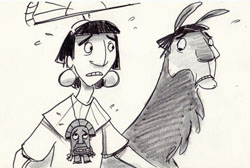
Story sketch for the what would become “The Emperor’s New Groove”
The first 40 minutes or so document the great detail and effort in putting together Kingdom of the Sun. The remainder of the documentary showcases the breakneck rush to complete the film when it becomes The Emperor’s New Groove. The difference in quality is jarring.
The original story for Kingdom of the Sun was fairly basic.
Pacha, the peasant llama herder, was not a heavyset middle-aged married man but a carefree, good-hearted 18-year-old who was a dead ringer for Emperor Manco. (In the final version, the character is renamed Kuzco following Fullmer’s horrified discovery of the Japanese slang term “omanco” that politely translates into the word “vagina.”) A young Owen Wilson provides the voice for Pacha.
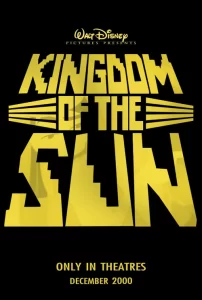 Sting wrote “Walk the Llama Llama” that Pacha was to sing as he led his trio of llamas down the mountainside and into the marketplace. There was concern that Hartley’s clever lyrics were too sophisticated for an unsophisticated peasant boy who would never use words and phrases like “panorama” and “the perfect fashion statement.”
Sting wrote “Walk the Llama Llama” that Pacha was to sing as he led his trio of llamas down the mountainside and into the marketplace. There was concern that Hartley’s clever lyrics were too sophisticated for an unsophisticated peasant boy who would never use words and phrases like “panorama” and “the perfect fashion statement.”
Manco (voiced by David Spade) had grown bored with being ruler of his mountain kingdom so when he discovers the kindly llama herder who is his doppelganger he decides to get away from his duties of state by switching places. Unfortunately, a sorceress named Yzma who has her own agenda turns Manco into a llama who cannot talk so Pacha must continue the masquerade.
The situation becomes more complicated when Manco’s betrothed, the handmaiden Nina, finds the arrogant and haughty emperor is now kind and funny. She finds herself drawn to the seemingly transformed emperor. Pacha also finds himself falling in love with Nina even though she is promised to the emperor.
Sting wrote “One Day She’ll Love Me” that was to appear midway through the movie where Pacha and Nina are at a party at the palace and the two teens fight their growing attraction to one another.
Yzma had once been an incredible beauty in the Incan royal court. However, time and the sun have cruelly robbed her of her good looks. Yzma begins dabbling in the dark arts in an attempt to revive her beauty although she firmly believes it is the sun that has robbed her of her beauty.
She wants to snuff out all light on earth by unleashing the demon, Supai who is a force of darkness, to block out the sun. In a world locked in perpetual darkness, Yzma feels that her great beauty will finally be restored.
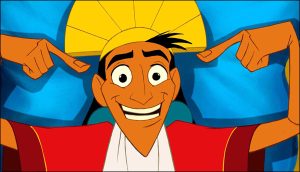 Sting created a truly show-stopping number titled “Snuff Out the Light” with Eartha Kitt, voicing Yzma, cutting loose with some really witty lyrics. Yzma works in a blacklit dungeon that soon fills with wild streaks of color and a trio of comic mummies. The mummies were named after badly aging rock stars: Mick, Bowie and Lemmy.
Sting created a truly show-stopping number titled “Snuff Out the Light” with Eartha Kitt, voicing Yzma, cutting loose with some really witty lyrics. Yzma works in a blacklit dungeon that soon fills with wild streaks of color and a trio of comic mummies. The mummies were named after badly aging rock stars: Mick, Bowie and Lemmy.
The song has a driving beat and builds and builds in intensity. Some have compared it to the song “Pink Elephants on Parade” from Dumbo. Once Yzma’s storyline was snuffed there was no reason for the song so it got snuffed as well.
Master Disney animator Andreas Deja, who was working on the character and saw her as a classic Disney villainess like Malificent or Cruella De Ville, was said to be furious with the way Fullmer and Dindal had re-invented the character. Yzma became just one of Kuzco’s advisers that the emperor thinks has gotten too old to do the job and fires her. Deja left the production entirely, telling Fullmer that he wanted to work on “a great film” and found work on Lilo and Stitch.
Not only were the three songs I described removed from the film causing friction with Sting; another blow-up comes when Fullmer asks the angry Sting for two new songs: “Perfect World” and “My Funny Friend and Me” for the new storyline.
In the film, Sting doesn’t really want to be on the project anymore, as he’s now working on an album and on tour, but he finally relents. He only threatens to quit once more, and the threat is averted by a major change in the movie’s ending.
“After about five minutes of ranting and raving, I thought ‘OK, let’s get back to work. Let’s try to make this thing happen,'” Sting said.
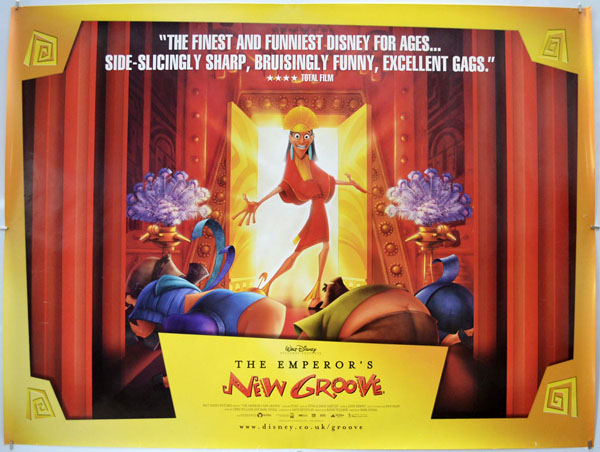
The film that “Kingdom of the Sun” became.


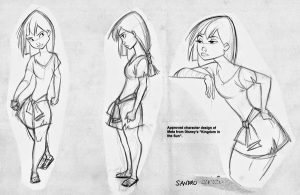
 Jim Korkis is an internationally respected animation historian who in recent years has devoted his attention to the many worlds of Disney. He was a columnist for a variety of animation magazines. With his former writing partner, John Cawley, he authored several animation related books including The Encyclopedia of Cartoon Superstars, How to Create Animation, Cartoon Confidential and Get Animated’s Animation Art Buyer’s Guide. He taught animation classes at the Disney Institute in Florida as well as instructing classes on acting and animation history for Disney Feature Animation: Florida.
Jim Korkis is an internationally respected animation historian who in recent years has devoted his attention to the many worlds of Disney. He was a columnist for a variety of animation magazines. With his former writing partner, John Cawley, he authored several animation related books including The Encyclopedia of Cartoon Superstars, How to Create Animation, Cartoon Confidential and Get Animated’s Animation Art Buyer’s Guide. He taught animation classes at the Disney Institute in Florida as well as instructing classes on acting and animation history for Disney Feature Animation: Florida.




















































Well, thanks for teaching me a Japanese word I’m never going to use. I don’t know why Randy Fullmer felt compelled to change Manco’s name in the original instead of just the Japanese language dub; this sort of thing happens all the time in anime. For example, Musa, the fairy of music in “Winx Club”, is known as “Martha” in the Welsh dub, because “mws” is the Welsh word for “rancid”. It happens in real life, too. Some years ago Finnish Prime Minister Aho visited Japan in spite of the fact that his surname is one of the many Japanese words for “idiot”, and he proved very popular with the Japanese people. My own surname sounds like the Japanese word for “cruel” or “repulsive”, but that hasn’t stopped me from touring there.
The cute girl in the model sheet is named Mata, which is the Japanese word for “again”. As for the demon Supai, “suppai” means “sour”.
It’s not hard to understand Disney’s rationale in bringing Sting onto this project. After all, “The Lion King” had just been a major success with a hit soundtrack by Tim Rice and Elton John. Why not try to duplicate that success with another British pop star? This would reach its nadir with the songs Phil Collins recorded for “Tarzan”, which fit the jungle epic about as well as an oboe solo in a Sex Pistols song. The downside to this scheme is that big name pop stars are bound to have a keen sense of the value of their work, hence prone to take umbrage and walk off the job if it is rejected through no fault of their own because of changes in the story. Compare a salaried in-house composer like Frank Churchill: if he wrote a song that Walt Disney felt was wrong for his picture, for whatever reason, Frank would just write another one, no questions asked and no hard feelings.
As for Xingu Films, I don’t know the etymology behind the name, but I do know that Xingu is a brand of Brazilian beer. It’s so dark and thick, it makes Guinness Stout look like a pale ale.
Glad a certain someone wasn’t doing an animation “news” site at the time the film was in production. We wouldn’t hear the end of it and his overly needless griping.
Needless griping??? This movie could’ve been a masterpiece and we animation consumers were deprived of it.
Listen, if the staff said they had story trouble with the first draft, I’d get that and the first storylines seem to have one too many plots going around at once.
“Needless griping??? This movie could’ve been a masterpiece and we animation consumers were deprived of it.”
Coulda woulda shouda- I’m happy with the way the finished movie came out. Frankly, the changes were the shot in the arm Disney needed; being a pure comedy film was a nice change of pace from the type of films they usually do, as well done as they are.
Going by the information given here, it looks to me more like the best-case end result would be another The Lion King. I’m aware many, if not most, animation fans consider TLK to be the best Disney cartoon post-BatB, if not an outright masterpiece itself, but I always felt it was somewhat overrated; very entertaining and quite good, yes, but “middle of the pack” in terms of the Disney Renaissance films. As much as I would love to see a finished “Kingdom of the Sun”, I’m not complaining about the wacky buddy comedy that we got in its place.
Honestly, I thought it was well-done and deserved the praise.
Sorry to disillusion you, but he did have a rather primitive Animation Blast website up back then. I remember reading his somewhat snarky comments when Jean Vander Pyl passed away in 1999.
I did not know that and that’s terrble that he did a disrepectful comment of one of my favorite animated female voice actors.
What did they say about Jean Vander Pyl?
It was a headline that read something like “Old Cartoon Voice Lady Dies”.
Oh, Amidi did write about the Sweatbox : https://www.cartoonbrew.com/disney/the-sweatbox-the-documentary-disney-doesnt-want-you-to-see-59467.html
But Jerry did it first : https://www.cartoonbrew.com/old-brew/one-more-question-1560.html
And Dudok de Wit last year : https://www.cartoonbrew.com/classic/the-emperors-new-groove-a-new-oral-history-tells-the-behind-the-scenes-story-disney-doesnt-want-us-to-know-201368.html
Animation Blast was mostly a fanzine, a quite good one.
I’ve never seen that image before of Pacha bowing before Kuzco, with his butt crack exposed. That’s an official image by Disney!
I think Kingdom Of The Sun would have been okay, but I feel like it’d be one of those films where the villain and side characters would be more interesting, with protagonist Kuzco being rather forgettable.
“…one of those films where the villain and side characters would be more interesting [than the] protagonist….”
Sounds like “Sleeping Beauty”, an animated masterpiece that lost millions of dollars for Disney. Maybe that’s what they were afraid of.
Which, perhaps not coincidentally, is another Disney cartoon that I think is somewhat overrated. Gorgeous to look at, though, no denying that.